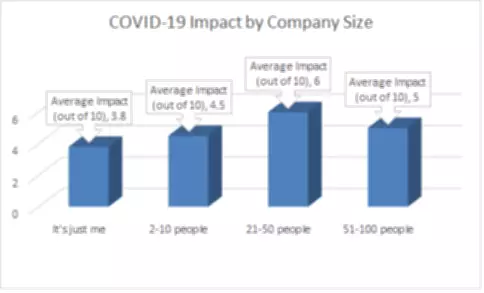Content

All accounts and their balances after the closing entries have been journalized and posted to the ledger. Usually, a trial balance lists the general ledger balances before any adjustments. It occurs when companies enlist those balances at the year-end. However, companies may adjust the general ledger balances later. These adjustments usually include year-end, non-cash, prepaid, accrued and other transactions.

A company needs to prepare a Profit & Loss, Balance Sheet, and Cash Flow statement at the end of each accounting period. Since the balances of all the ledger accounts are there in the trial balance. The purpose of the post-closing trial balance is to check the debits and the credits once the accountant passes the closing entries for the transaction. It includes only the real accounts, as all the nominal accounts are closed at this time. After accounting for the post-closing entries in the adjusted trial balance, companies get the post-closing trial balance. This trial balance is crucial in closing any accounts in the last accounting period.
What Are Temporary Accounts in Accounting?
You will not understand how your decisions can affect the outcome of your company. Remember, if debits equal credits, the accounting equation will balance. A trial balance post closing trial balance prepared after closing entries are posted is called a post-closing trial balance. The Guitar Lessons Corporation’s December 31 post-closing trial balance is shown below.
Steps 1 through 4 were covered in Analyzing and Recording Transactions and Steps 5 through 7 were covered in The Adjustment Process. Now that we have completed the accounting cycle, let’s take a look at another way the adjusted trial balance assists users of information with financial decision-making. You probably noticed that a post closing trial balance looks a lot like a balance sheet in the format of a trial balance. In the middle column, you will place debit balances for every account, and in the rightmost column, you will place all credit account balances. This also helps to ensure that all temporary accounts have been properly closed, which is essential to ensure that accounts will remain accurate during the next cycle. This balance sheet will help ensure that a company’s beginning balances are correct for the next accounting cycle.
Adjusted Trial Balance Vs. Post Closing Trial Balance: What is the Difference?
In the adjusted trial balance, these accounts exist with balances. With the post-closing trial balance, companies remove those amounts. Once companies prepare the general ledger, they must calculate the closing balance on each account. Companies must transfer income and expenses to the profit or loss account. These balances then reach the trial balance, contributing to the financial statements. However, companies may prepare different types of trial balances. Before understanding those types, it is crucial to know what the trial balance is.
- After the closing entries are journalized and posted, only permanent, balance sheet accounts remain open.
- This means you are preparing all steps in the accounting cycle by hand.
- Since temporary accounts are already closed at this point, the post-closing trial balance will not include income, expense, and withdrawal accounts.
- This is because onlybalance sheetaccounts are have balances after closing entries have been made.
- This will use three columns, including one for the names of accounts, one for debits, and one for credits.
For example, if the credit balance in revenue is $50,000, you would debit revenue for $50,000 and credit income summary for $50,000. If there is a debit balance of $30,000 in expense accounts, you would credit expenses for $30,000 and debit income summary for $30,000. The balance in income summary of $20,000 would then be entered as a credit to retained earnings. This will reduce revenue and expense accounts to zero for the next accounting period.
What Is Wrong if a Company Doesn’t Complete the Closing Entries?
As you will learn in Corporation Accounting, there are three components to the declaration and payment of dividends. https://www.bookstime.com/ The first part is the date of declaration, which creates the obligation or liability to pay the dividend.
- Once your adjusting entries have been made, you’re ready to run your adjusted trial balance.
- These accounts include revenue, expense, COGS, gains, and losses accounts.
- All temporary account balances such as revenue, COGS, accrued expenses, deferrals, etc. would be carried forward to the next accounting period.
- On the balance sheet, the credit balance in the Accumulated Depreciation does not come with the other credit balances.
- The creation of the post-closing trial balance is the last thing that occurs at the end of an accounting cycle.
Once an accountant determines the zero balance test , it means there are no further transactions for the old accounting period. Therefore, any new transaction must be for the next accounting period. The adjusted trial balance does not impact a company’s retained earnings. Since it holds income and expense account separately, it does not affect the retained earnings account. As mentioned, it does so by transferring incomes and expenses to the retained earnings account. The post-closing trial balance also closes dividends accounts, thus, impacting the retained earnings. The adjusted trial balance is crucial in reporting an accurate balance on various accounts.
How to Record Accrued Salaries? (Definition, Journal Entries, and Example)
Understanding the accounting cycle and preparing trial balances is a practice valued internationally. The Philippines Center for Entrepreneurship and the government of the Philippines hold regular seminars going over this cycle with small business owners. They are also transparent with their internal trial balances in several key government offices. Check out this article talking about the seminars on the accounting cycle and this public pre-closing trial balance presented by the Philippines Department of Health. What is the current book value of your electronics, car, and furniture? Are the value of your assets and liabilities now zero because of the start of a new year? Your car, electronics, and furniture did not suddenly lose all their value, and unfortunately, you still have outstanding debt.
This behavior applies only when the Primary Accounting Book is selected in the Accounting Book filter when you use multi-book accounting. The information featured in this article is based on our best estimates of pricing, package details, contract stipulations, and service available at the time of writing. Pricing will vary based on various factors, including, but not limited to, the customer’s location, package chosen, added features and equipment, the purchaser’s credit score, etc. For the most accurate information, please ask your customer service representative. Clarify all fees and contract details before signing a contract or finalizing your purchase. Each individual’s unique needs should be considered when deciding on chosen products.
A post‐closing trial balance is prepared to check the clerical accuracy of the closing entries and to prove that the accounting equation is in balance before the next accounting period begins. Overall, the post-closing trial balance involves recording closing entries to the adjusted trial balance.
What is a closing entry example?
For example, a closing entry is to transfer all revenue and expense account totals at the end of an accounting period to an income summary account, which effectively results in the net income or loss for the period being the account balance in the income summary account; then, you shift the balance in the income …
The post-closing trial balance is the report that lists all the accounts of a company and their balances after all adjustments and closing entries have been made. The creation of the post-closing trial balance is the last thing that occurs at the end of an accounting cycle.
Post Closing Trial Balance Report
If not, you’ll have to do some research to locate and correct any errors. Overall, the adjusted trial balance represents a record of adjusted balances from the general ledger. It differs from the traditional trial balance that does not include those adjustments. For most companies, these adjustments are crucial in presenting an accurate picture of the financial statements. The adjusted balances may relate to several accounts, as mentioned above.
